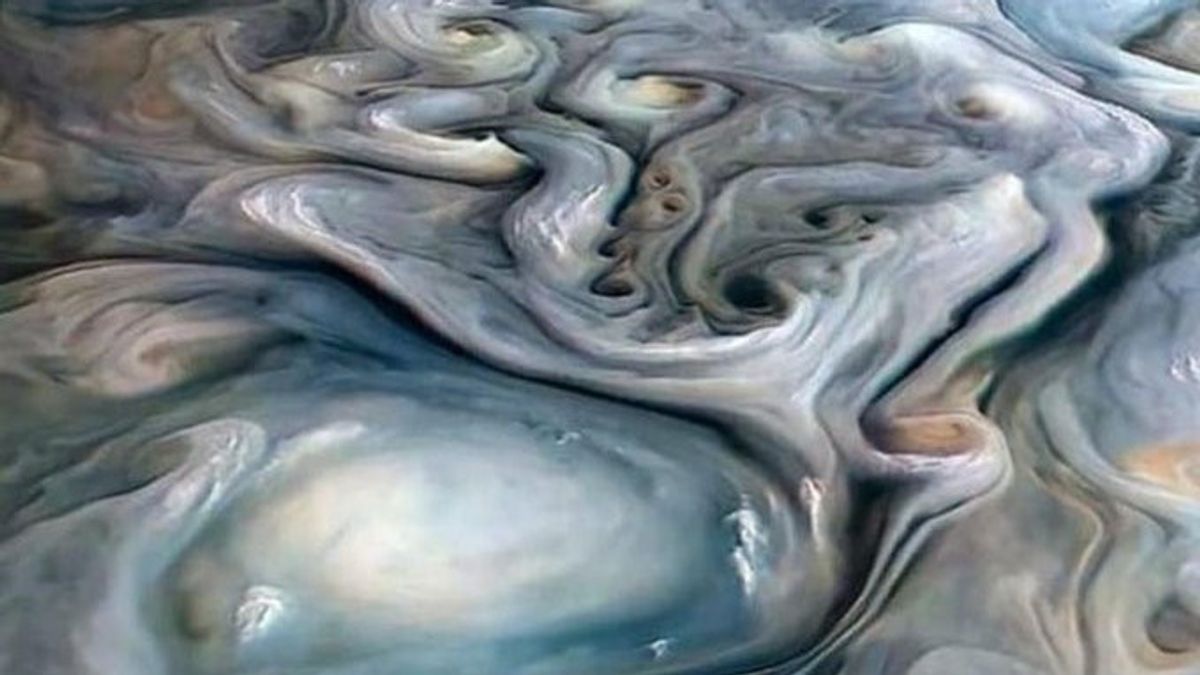JAKARTA - Recently, space researchers found a solid reason why the mass of the Planet Jupiter is twice as large as every other planet in our solar system combined. The reason for this is quite simple, because Jupiter eats other smaller planets.
A new study, using data from NASA's Juno mission, reveals that Jupiter's mysterious core is even more massive than previously thought. Juno, itself is a satellite that aims to learn more about the origins of Jupiter.
The researchers listed several possible scenarios to explain how Jupiter formed. Two commonly held theories hold that Jupiter emerged together from a swirling cloud of gas that exploded to create a solid center. This is similar to how a star first appears together or through the merging of rock and ice collisions that eventually develops into planetary status.
The problem is, no one is sure what Jupiter's core looks like. Is it a rock or a heavy elemental cloud? The researchers couldn't really land anything there to find out. "There is no unique solution to Jupiter's internal structure," the researchers wrote in a new report published in the journal Icarus, as quoted by The New York Times, June 17.
NASA's Juno spacecraft has been collecting images and information about the inner workings of Jupiter since 2016. But scientists have only recently begun to parse that data.
The latest findings provide puzzling evidence that Jupiter's core region makes up three times as much as previously thought. Older theories estimate that its center takes up about 10% of the planet's total mass. In fact, the researchers found, that share was close to 30%.
The mass is much heavier than the previous two hypotheses. Both hypotheses are based on the pretense that Jupiter is composed mostly of helium and light hydrogen. But researchers have now come up with a new theory, that Jupiter is big because it devours baby planets, called planetesimals. This could explain how it would have ended up with such a dense nucleus, namely because it accumulated a lot of smaller, denser nuclei.
The less-than-favorable explanation in the report describes a possible accident with a giant rocky body that may have left behind a lot of heavy metals.
The researchers say the new hypothesis will have implications for further research. They already knew that Jupiter's gravitational pull had an effect on the formation of the nearby planets.
"Jupiter was the most influential planet in the formation of the solar system," said researcher Yamila Miguel, an astrophysicist at Leiden University in the Netherlands, according to Live Science.
The report could add to the understanding of how gas giants formed and, perhaps, how they prevented the formation of other potential planets.
Miguel said future high-resolution observations of the gas giant, such as those from NASA's Juno, would be key to unraveling the planet's past.
The English, Chinese, Japanese, Arabic, and French versions are automatically generated by the AI. So there may still be inaccuracies in translating, please always see Indonesian as our main language. (system supported by DigitalSiber.id)








